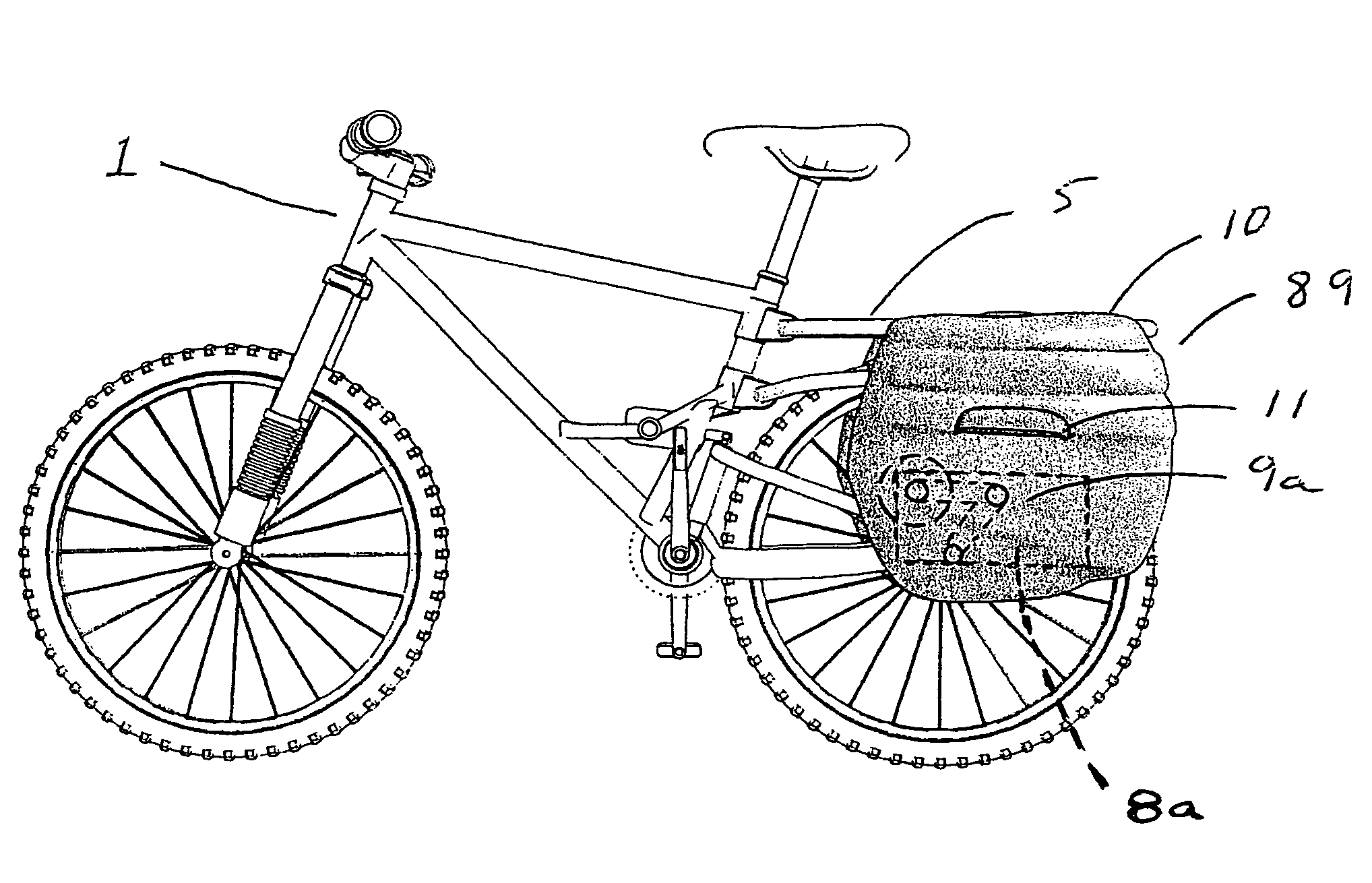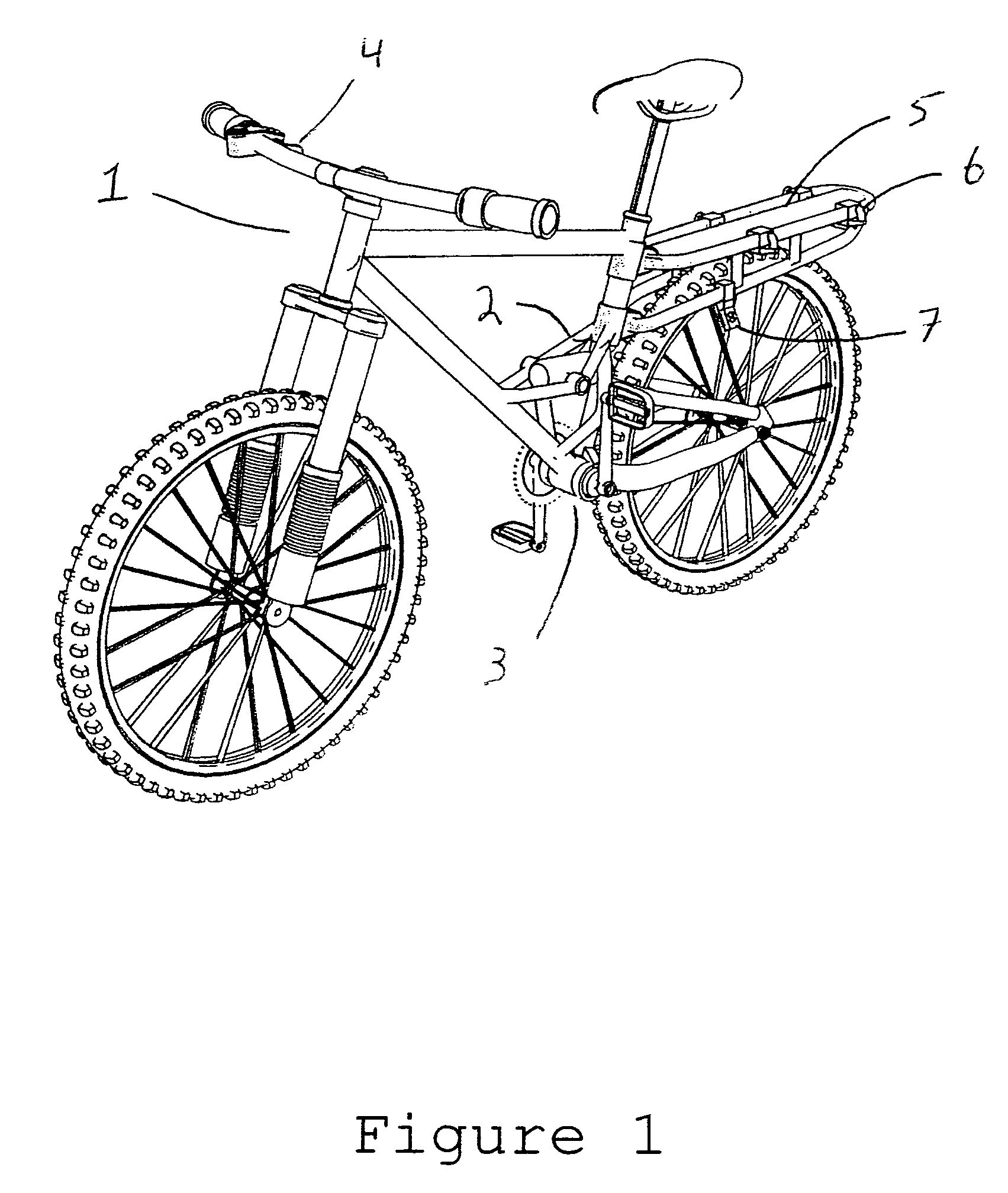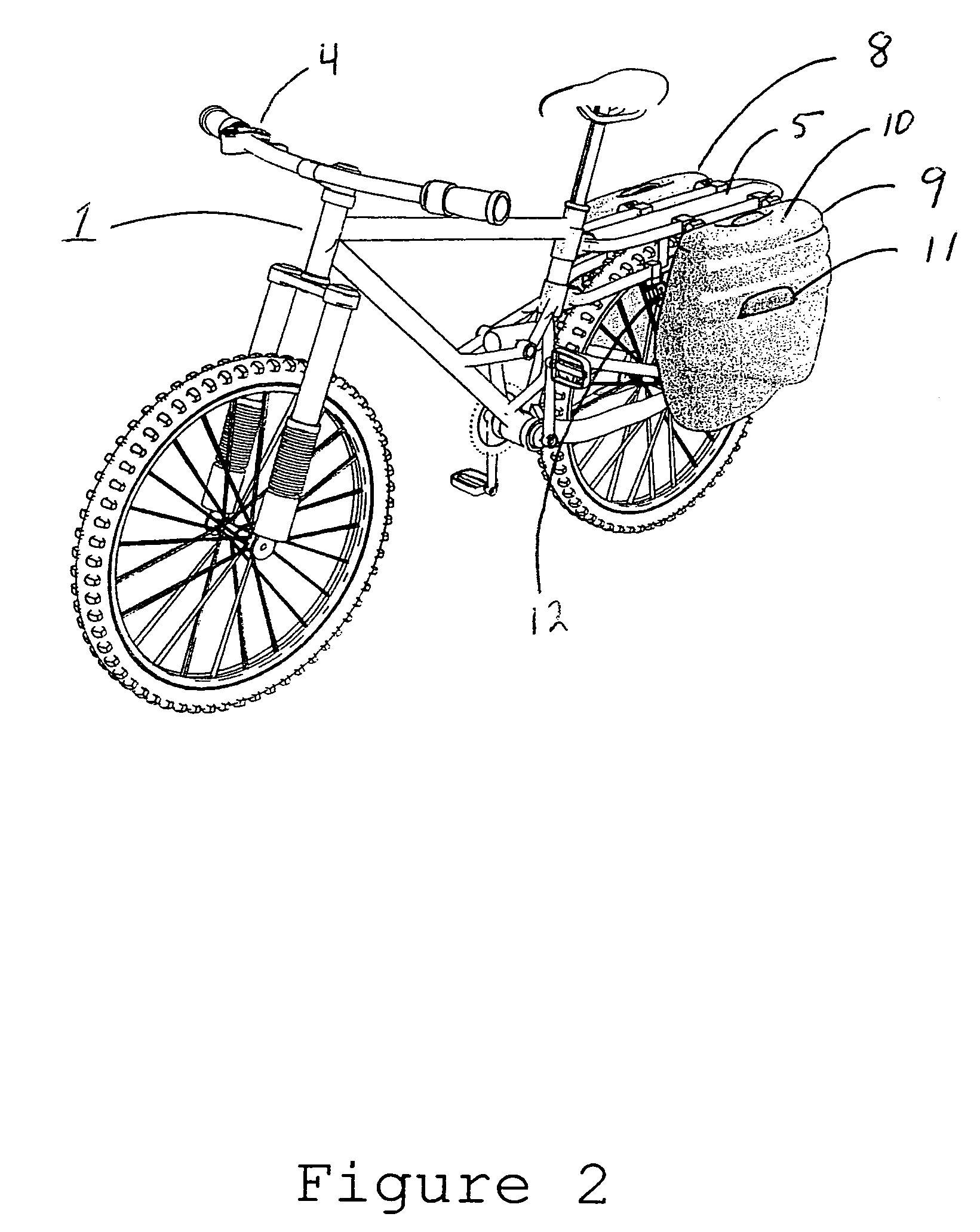Bicycle with optional power assist
a technology of electric assistance and bicycle, which is applied in the direction of bicycles, motorcycles, transportation and packaging, etc., can solve the problems of human power ultimately remaining the primary restriction to increase the utility of bicycles, the practical results of these performance limitations become obvious, and the human being can typically generate only 100–200 watts of power, etc., to achieve the effect of quick and easy attachment and removal
- Summary
- Abstract
- Description
- Claims
- Application Information
AI Technical Summary
Benefits of technology
Problems solved by technology
Method used
Image
Examples
first embodiment
[0052]FIG. 5 shows the invention in which the hub of the rear wheel is driven directly by the motor drive unit 16 and motor 17 (schematically indicated as a circle) located in the pannier. A vertical structural connection indicated at 9b merely represents the pannier 9 as attaching the motor 17 to the rear utility rack, represented as 5a. This figure is for illustrative purposes only as motor and motor drive unit would be enclosed in the pannier with the motor mounted solidly to the pannier with clearance for the drive unit 16 to articulate with the suspension. While not the only means to transfer power from the motor to the rear axle, the motor drive unit 16 in this embodiment consists of two chains or belts 16a, 16b that share an axle at the center connection point 16c but are connected to independent cogs or sprockets (16d visible adjacent bicycle hub) at the end of each extension arm 16e, 16f of the drive unit. This power transfer mechanism provides ample freedom of motion even ...
second embodiment
[0057]FIG. 8 shows schematically one potential configuration of the invention in which a pannier based motor 32 connected to a motor drive unit 33 transmits power via a retaining mechanism 34 clasped to a large “ring” gear 35 attached to the rear wheel rim. The motor 32 is represented as a circle, and a connection of the motor to the utility rack of the bike is represented by a vertical post 9b (as in FIG. 5). The motor drive unit 33 is articulated on two parallel axes, one at the motor, not seen, and another 33a at the junction of two articulated arms 33b and 33c, each with a drive chain as indicated.
[0058]FIG. 9 shows a close-up view of the ring gear and retaining mechanism in one preferred configuration for this second embodiment of the invention. Specifically, the retaining mechanism 34 has an arm 36, bearing-mounted on a rotational shaft 38, to ensure proper alignment between the drive unit's drive gear 37 and the rim-based wheel gear or ring gear 35. The arm is spring tensione...
third embodiment
[0061]FIG. 11 is a perspective view of one possible specific configuration of the third embodiment in which a sealed straight-cut gear-to-gear final drive 44 couples to the motor drive unit 42. The bicycle's final drive 44 has a sealed housing 45. No brake disk is shown in this view.
PUM
 Login to View More
Login to View More Abstract
Description
Claims
Application Information
 Login to View More
Login to View More - R&D
- Intellectual Property
- Life Sciences
- Materials
- Tech Scout
- Unparalleled Data Quality
- Higher Quality Content
- 60% Fewer Hallucinations
Browse by: Latest US Patents, China's latest patents, Technical Efficacy Thesaurus, Application Domain, Technology Topic, Popular Technical Reports.
© 2025 PatSnap. All rights reserved.Legal|Privacy policy|Modern Slavery Act Transparency Statement|Sitemap|About US| Contact US: help@patsnap.com



